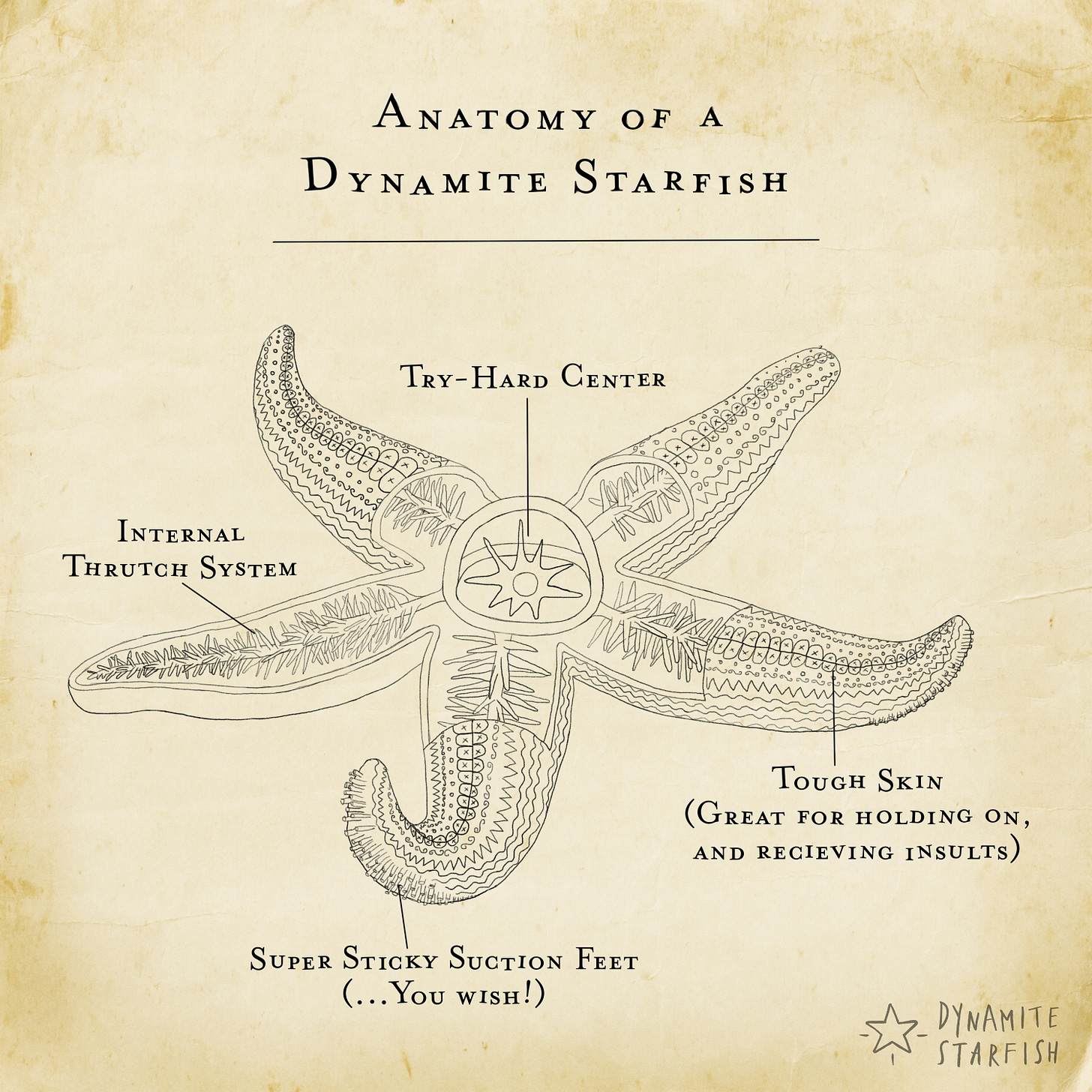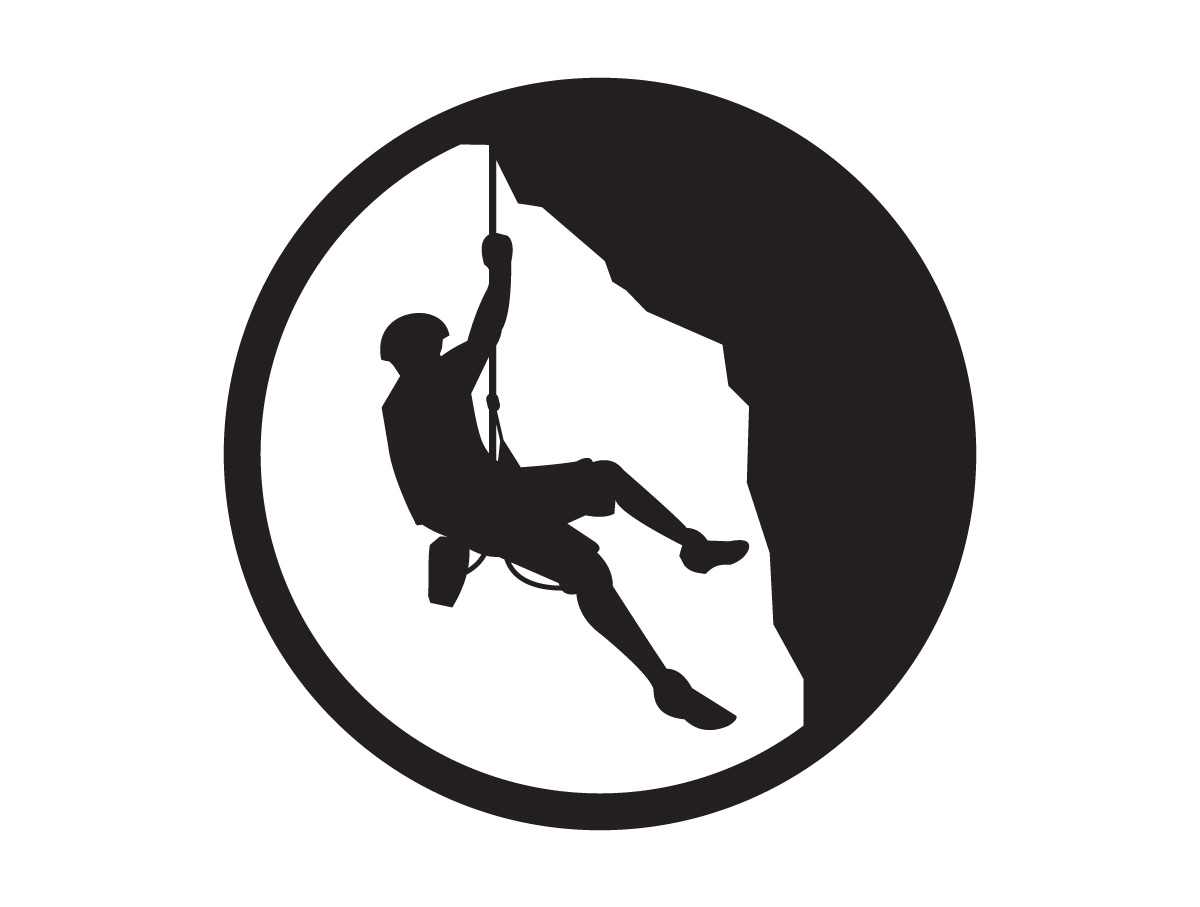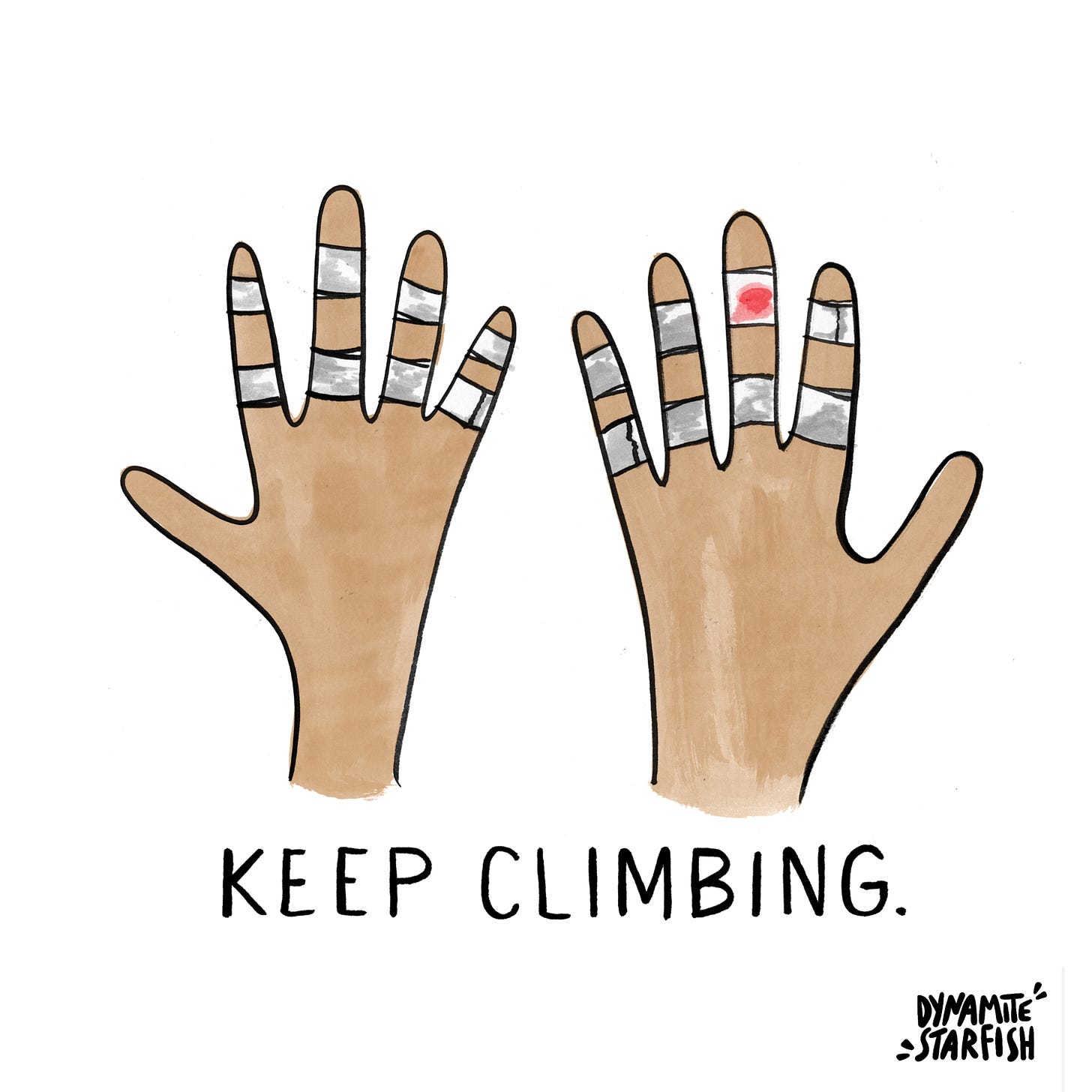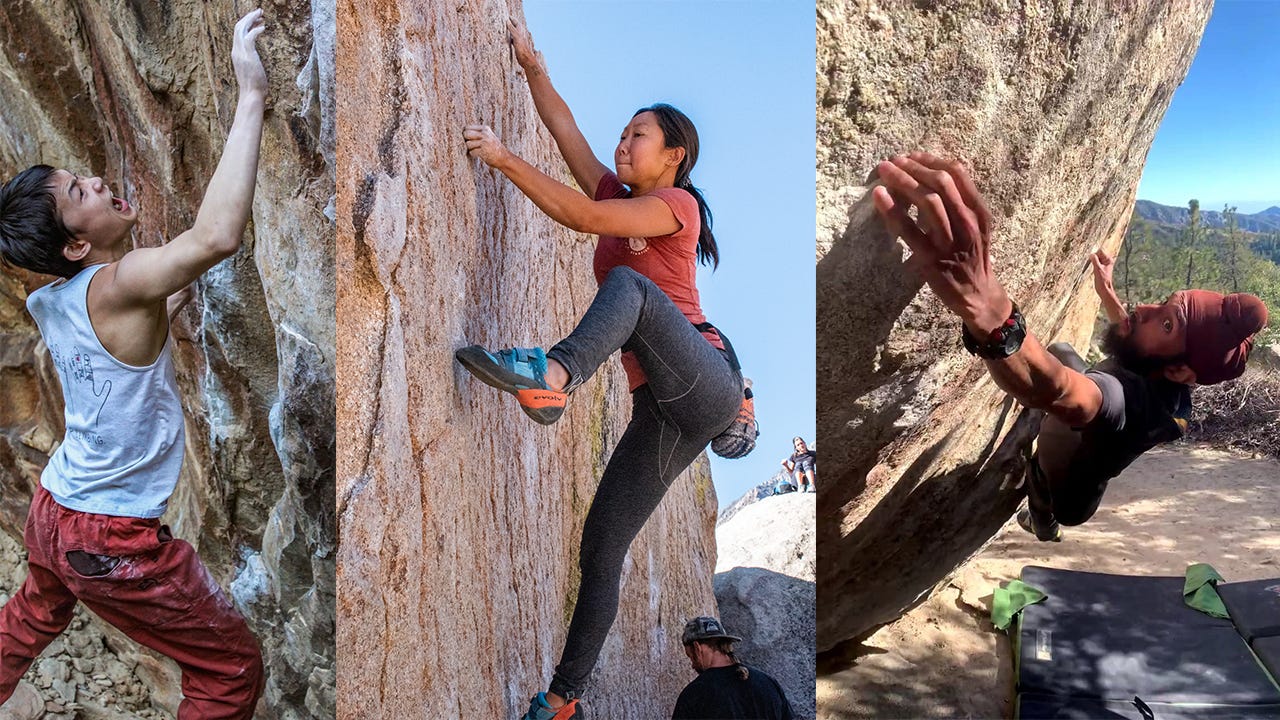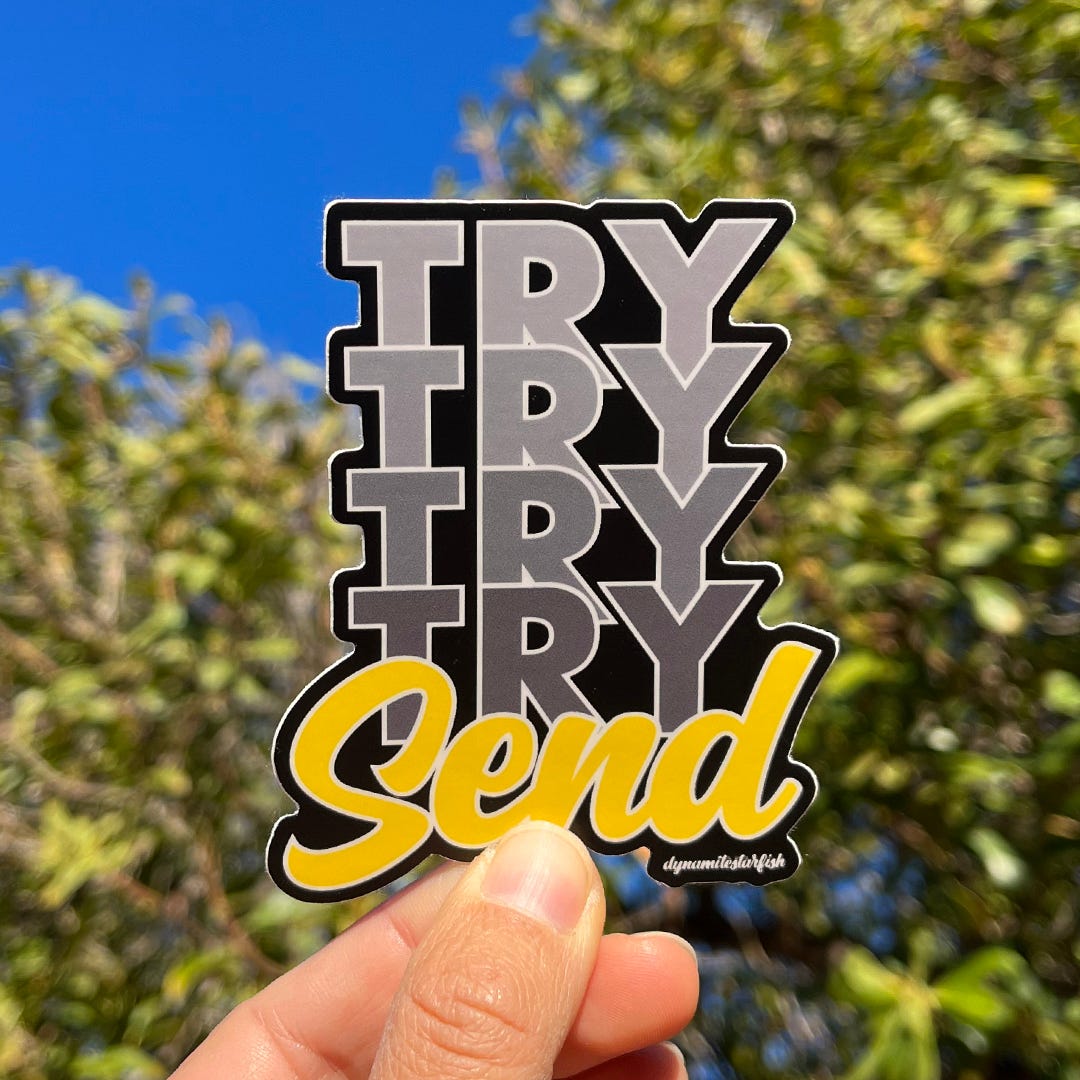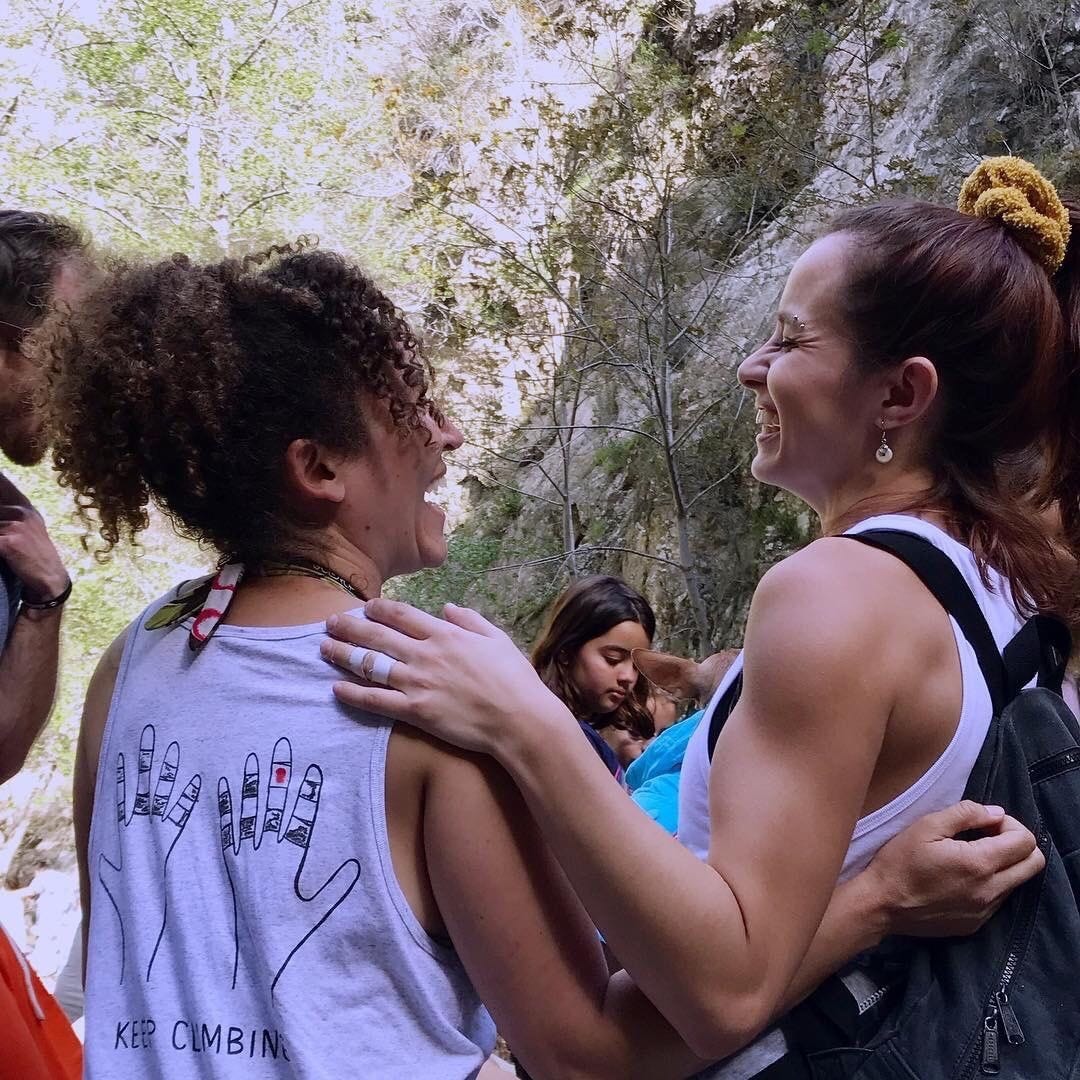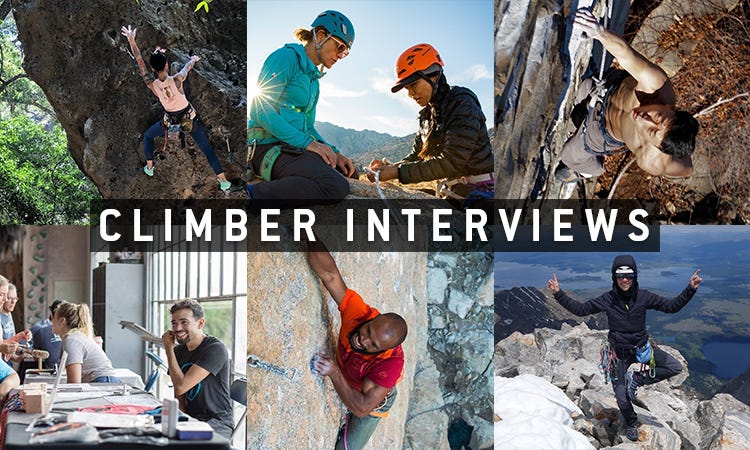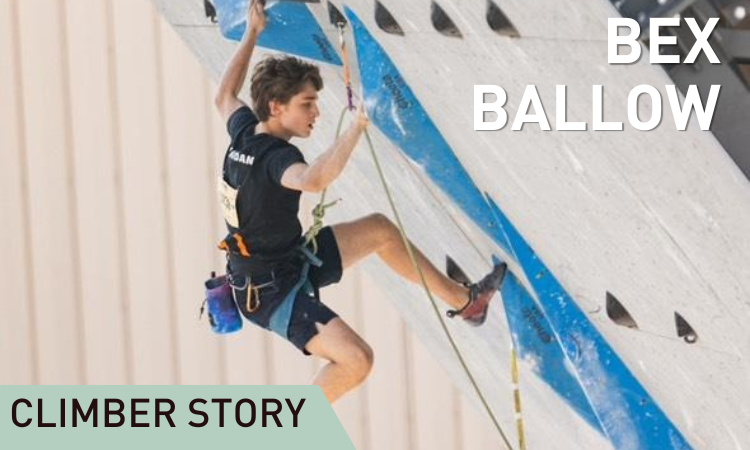Your Cart is Empty
DYNAMITE STARFISH'S ONLINE STORE IS CLOSED AS OF DEC 1, 2026. ask your local gear shop or climbing gym if they stock our products.
DYNAMITE STARFISH'S ONLINE STORE IS CLOSED AS OF DEC 1, 2026. ask your local gear shop or climbing gym if they stock our products.
Glimmers of a radiant world: The building blocks of Dynamite Starfish
January 13, 2023 8 min read
I didn’t grow up in one, but for as long as I can remember, I've been dreaming of a radiant world.
In 2014, I decided to start building the pieces of the world I wanted to live in. One where misfits like myself were seen and accepted for who they were, but also encouraged to explore their potential.
I called it Dynamite Starfish.
“Uhhh what?” Yeah, I know what you’re thinking.
Let me explain. Dynamite Starfish is the name of a rock climbing move. One where your arms and legs are completely outstretched and you’re trying desperately to get some kind of upwards momentum.
It’s a moment of foolish abandon, precariously dangling from a rock, terrified, but willing to give it your maximum effort. Doing a Dynamite Starfish might not work the first time, but it could be the only way to get to where you’re going.
Dynamite Starfish embodies everything I love about rock climbing. It’s also a way of life.
One of the first illustrations describing the Dynamite Starfish way
When I began rock climbing, it was like entering another world. Unlike the social groups I had been a part of in the past, the climbing world seemed to lack the pretentious judgment of hip designers or the self-destructive chaos of the party scene.
What I saw were people from all manners of backgrounds, working together to have a great time. Climbers put themselves willingly in challenging situations and got through them with equal amounts of struggle and laughter. I saw the way it bonded people to places. Climbers overcame fears together, supported each other, and seemed to actually care about each other.
But why didn’t the climbing media show any of this? When I looked at climbing art, all I could see was Microsoft Word-style clip art with a cheesy silhouette of a man hanging off a rock a la Sylvester Stallone in Cliffhanger.
Where was the joy? Where were the vastly diverse and beautiful personalities I saw out there at the gyms and crags? Where were the emotional highs and lows of giving it your all?
It turns out, art like that didn’t exist yet. That wonderful culture I was a part of had no voice.
Inspired by the places I traveled to and the people I met on those travels, I started making drawings about climbing. I didn’t want to make art that showed landscapes or people actually climbing, I wanted to make art about the feeling of climbing. I wanted to create art about all the struggles and joys and victories that all climbers experience, regardless of their performance level.
Once I made a few drawings, my friends asked me if I could please sell my art on t-shirts. At first, I didn’t want to, but eventually, I stopped resisting and screen-printed a small batch of forty-eight shirts in the living room of my apartment.
And that’s how Dynamite Starfish was born.
Try hard. Have fun. Care about the things you love.
If a silly-sounding climbing move has anything to teach us, it’s to try our best despite looking and feeling absolutely hopeless. By creating art about the climbing process rather than the validation we get from climbing, Dynamite Starfish embraced and spearheaded an emergent climbing culture. Dynamite Starfish made it not just okay to flail, but awesome to flail.
The most important thing I wanted climbers to take away from Dynamite Starfish was that rock climbing wasn’t about looking “cool.” It was about something deeper.
Dynamite Starfish was there to remind you about the ninety-nine falls it took to get to the top.
Dynamite Starfish was there to remind you what it is you love so much about climbing and to remember your why.
Thomas Lin, Leslie Kim, and Ravinder Singh are all Dynamite Starfish community members who love to try hard.
Try hard
“Commit, bro!” is a phrase that I used to hear frequently at the climbing gym. There are a lot of times a climber might think they’re trying, but something gets in the way of fully committing. Most of the time it’s fear. It could be an unrealistic fear of falling or a legitimate fear of injury or death. Fear of what people will think of you if you fall or look stupid is also one that can limit your performance.
What the gym environment taught me is that sometimes it takes another set of eyes to tell you that you just aren’t committed to the move.
Climbing might seem like a purely physical process, but it’s not. It’s also a mental puzzle. If you’re worried about what other people will think of you or fear that an unconventional move will compromise your appearance, you limit your creative problem-solving ability.
What if you had to do a gross-feeling knee scum or look like a beached whale to get to the top? Would you do it or would you rather keep your perfect poise? It’s a personal choice that will probably vary from climb to climb, but I know that in moments of true commitment when no one is looking, you’ll do just about anything to pull through. And that ability to pull through is way more celebratory than looking cool.
When you put aside any expectations of social validation and embrace the problem in front of you, you can be fully in the moment. You are free to try your hardest and use all your creativity to get you to the next step.
Dynamite Starfish’s Try and Send sticker: a reminder that behind every send (win) are numerous tries.
Have fun
When you are fully immersed in a boulder problem and giving it your best, you reach a flow state unlike anything else. Combine that with a group of friends all doing the same, and what you get is a blissful day of pure fun.
But what if you or one of your friends were really worried about hitting an arbitrary goal or wondering if their pictures would look good on Instagram? Sometimes it feels great to support your friends’ goals. But if those goals become paramount and the climber loses track of why they made them at all, they can lose that sense of enjoyment that made them fall in love with climbing years or decades ago.
When we lose our why, we open ourselves up to poor decision-making. We put our experiences at risk and open ourselves up to identification with failure or reckless decisions that can lead to accidents or injury.
Dynamite Starfish encourages climbers to ask themselves why they rock climb in the first place. Is it to have a good time? Is it for self-improvement? Is it to compete with our peers?
Most of us are not professional athletes. Climbing isn’t something we have to do for the sake of our livelihood. It’s something we choose to do to push ourselves, be active, or be social. And the reason why we climb and not some other activity is simply that we think it’s productive and fun. I hope we never lose sight of that.
Care about the things you love
Here’s a depressing but pervasive thought: In our nihilistic, content-saturated age, why care about anything? Isn’t it all just a meaningless grift anyways?
I know I’ve been caught thinking this way. Before I started rock climbing, everything in my life seemed hopeless. My work wasn’t going anywhere, dating sucked, and I was drifting farther away from friends and family.
But through rock climbing, I learned how to try hard and have fun, and later on, I saw an unexpected result: I cultivated the capacity to care.
Which got me thinking: If you’re going to do your best scaling a rock and think it’s the best time ever, what’s the point if you never transfer those lessons over to your non-climbing life?
I guess you can climb for climbing’s sake and just try to be the best climber you can be, but why not go for more?
If you’ve learned how to push through hopelessness, aren’t worried about social validation, and can have a great time living that way, you’ve developed a valuable skill set that the world desperately needs.
It’s true, climbers can be selfish creatures. They can learn all these skills and keep them only for themselves. Many will never give back to the world at large. They can do harder and harder maneuvers and achieve otherworldly tendon strength, but I wonder: does that serve any purpose outside of our insular world of rock climbing?
Through weekly community features and conversation prompts, Dynamite Starfish encourages climbers to stay connected to their most honest selves and to the world outside of climbing.
It’s so easy to get tunnel vision when you love the sport so much and soon you’ll find yourself surrounded only by other climbers. And now, in a hyper-specific age, we can even immerse ourselves in even smaller groups of climbers who share one specific lifestyle.
When we live that way, we can feel some much-needed validation at first, but I worry that we may lose touch with the vastness of the billions of people who live on this planet. We may no longer be able to relate to someone’s experience if it is unlike ours. Our perspectives grow ever more closed-minded, and we start to feel increasing discomfort with the unfamiliar.
Perhaps Dynamite Starfish’s boldest mission is to bring different people together. By using the lessons learned from rock climbing, perhaps all people who have learned how to try hard, have fun, and care about something can have an opportunity and a reason to care about each other.
Snippets from Dynamite Starfish’s weekly climber interviews, where one climber from our community shares what climbing means to them, and what else they are doing to live a fulfilling life.
Rock climbing was the first activity I had done where I could laugh and struggle with a retired CEO, a plumber, and a Tik Tok influencer all in the same group. We could climb a route together, eat soggy burritos, and joke around for hours.
No matter how unrelated we may have been before that day, we could accomplish an objective as a single unit by climbing together. Our shared experience could now break through our different worlds and connect us for a lifetime.
When I started building Dynamite Starfish, I couldn’t know for certain if a radiant world existed. But by making human connections through climbing, I kept noticing these small glimmers.
I saw the way rock climbing could transform entire lives. I saw real cooperation and the pursuit of personal growth.
I knew that something beautiful was inside a voiceless culture.
In simply doing my job as an artist, I created what I saw. And as I did, I uncovered something even more beautiful.
I saw that rock climbing could teach us something bigger about life and human connection: I realized that you never had to touch a single rock to be a climber.
Every human has their own mountain to climb, and there are so many beautiful stories of brave people trying hard, having fun, and discovering what they truly care about.
Next up: Calling All Climbers, Misfits, and Lovers: How I Found My People
Leave a comment
Comments will be approved before showing up.
Also in News

The Climbing Training Struggles You Can’t Ignore (And How to Overcome Them)
March 19, 2025 6 min read
Read More
Building Trust and Teamwork: Qualities of a Great Climbing Partner
February 12, 2025 4 min read
Read More Recent Articles
- The Climbing Training Struggles You Can’t Ignore (And How to Overcome Them) March 19, 2025
- Building Trust and Teamwork: Qualities of a Great Climbing Partner February 12, 2025
- Climber Story: Bex Ballow January 29, 2025
- 9 Climbing Resolutions for 2025 December 31, 2024
- Climber Story: Kanani Kalahiki December 11, 2024
- 12 Awesome Gift Ideas for Climbers in 2024 November 20, 2024
- Climber Story: Nick Ranelli November 06, 2024
- If climbing was a scary movie, this would be the title... October 30, 2024
- Climber Story: Britney Berkstresser October 02, 2024
- The best (and worst) names for climbing routes we've ever seen September 25, 2024
Subscribe
Sign up to get the latest on sales, new releases and more …
want 15% off?
Get a welcome gift when you sign up with us!

